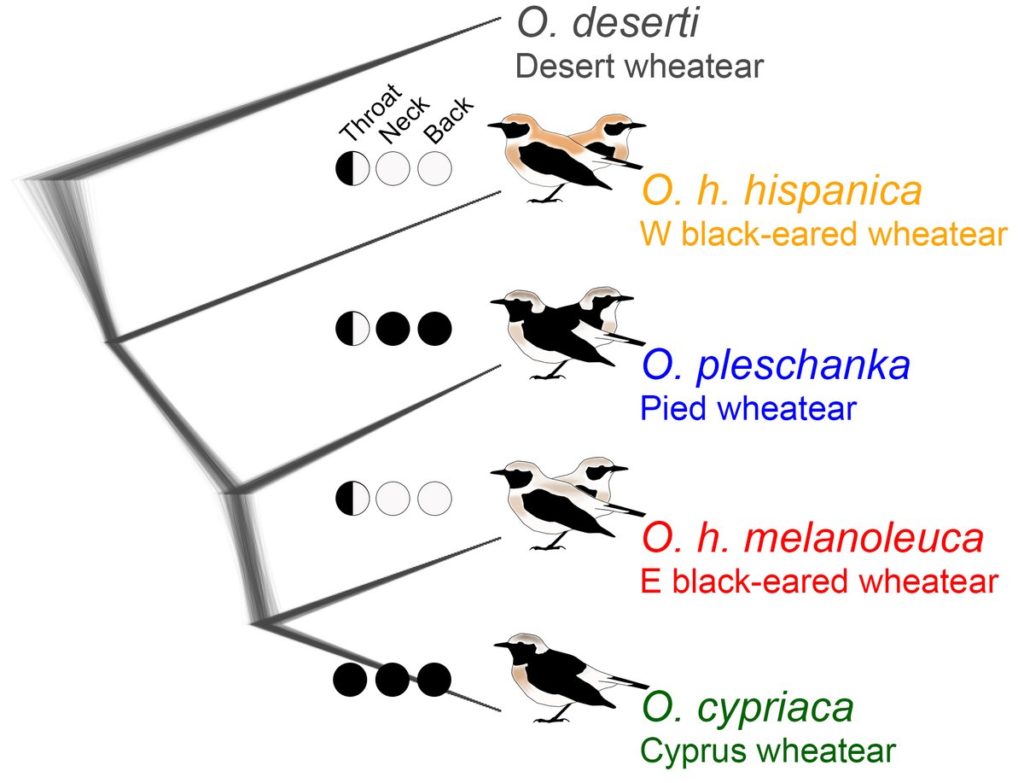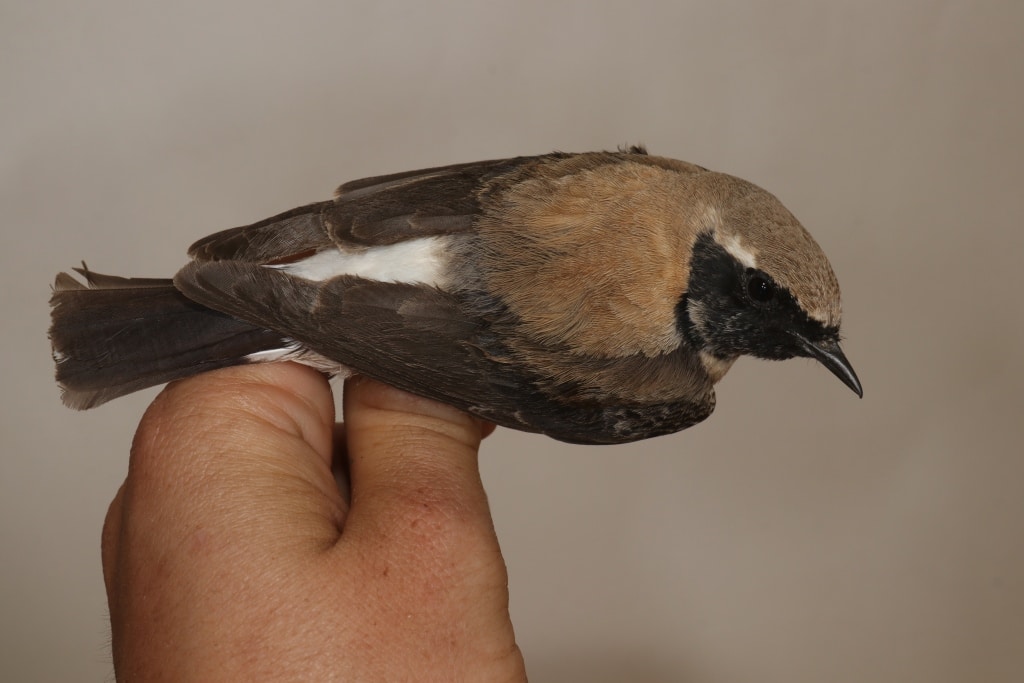The ‘Black-eared Wheatear’ is split into two separate species by the ‘IOC World Bird List’ based on recent genetic research. The first modern record of the Eastern Black-eared Wheatear has arrived just in time.
Le Traquet oreillard est composé de deux taxons, qui sont considérés jusqu’à présent comme des sous-espèces : un taxon nominal occidental (hispanica) et un taxon oriental (melanoleuca). Mais des études génétiques récentes ont montré que ces deux taxa ne sont pas étroitement liés, et doivent donc être considérés comme deux espèces distinctes. Par conséquent, l’autorité de la classification des oiseaux “IOC World Bird List” a élevée le taxon oriental au rang d’espèce à part entière : le Traquet noir et blanc (Oenanthe melanoleuca).
En mars dernier, un Traquet noir et blanc a été capturé et bagué à Merzouga, ce qui représente la première observation moderne au Maroc de cette espèce.
‘Black-eared Wheatear’ split
The ‘IOC World Bird List’ split the Black-eared Wheatear into two separate species in January 2020 (version 10.1): Western (Oenanthe hispanica) and Eastern Black-eared Wheatears (Oenanthe melanoleuca).
This split was based on research that begins almost a decade ago that looked at the genetic divergence between four closely related and phenotypically similar taxa: the two Black-eared Wheatear “subspecies” plus Pied Wheatear (Oenanthe pleschanka) and Cyprus Wheatear (Oenanthe cypriaca). The latter two, which are even more similar in plumage, were considered as belonging to the same species in the past.
These studies which culminated in the new publication by Schweizer et al. (2019) showed unequivocally that hispanica and melanoleuca are not sister taxa (not each other’s closest relatives) and therefore should be considered as two separate species.
They found, among others, that Western Black-eared Wheatear is the most genetically divergent from all the other three taxa (it started to diverge about 1.7 million years ago). The genetic distance between the three other taxa is very small (almost negligible) as they started to diverge later.
This example shows perfectly well the mismatch between plumage similarity and true phylogenetic relationships between the different taxa/species.
Reference:
Schweizer, M., Warmuth, V., Kakhki, N. A., Aliabadian, M., Förschler, M., Shirihai, H., Suh, A., & Burri, R. 2019. Parallel plumage colour evolution and introgressive hybridization in wheatears. Journal of Evolutionary Biology 32: 100–110.

Eastern Black-eared Wheatear in Morocco
Thévenot et al. (2003) in the ‘Birds of Morocco’ qualified melanoleuca as “perhaps overlooked”, but they cited only four records all of which were in northeastern Morocco in the 1950s (They were made by the same observer, A. Brosset, who was based in the region for most of this decade). No other known records since then.
In late February, Marc Illa and his colleagues arrived at Merzouga to start another bird ringing operation to study stopover ecology of migratory birds as they land after crossing the Sahara desert. Unfortunately, they hastily left Morocco when the coronavirus (COVID-19) started to spread in Europe and Morocco.
The team did some ringing sessions before leaving, and on 8 March captured this interesting wheatear. Marc said in email (slightly edited):
“Initially thought to be an odd-looking Seebohm’s Wheatear (due to their browner appearance in winter), but later realised it doesn’t fit anything else than Eastern Black-eared Wheatear. I guess we should call it “presumed”, but at least, anything that this bird shows doesn’t seem to match Western at all. It seems to be too dark, the black throat is very extensive, black goes over the bill, and the head is paler with a greyish tinge”.
He added that “maybe it was related to the rather exceptional influx of Isabelline Wheatears observed in the same region in late February/early March.
Last year, they got some very good results like the capture and ringing of four Eastern Subalpine Warblers (subspecies albistriata), three of which were captured in a single day (These were the first records for Morocco).



These ringing results show indeed that some oriental species are still under-recorded in Morocco.
A photo of the open wing, showing the amount of pale area on the inner web of secondaries and inner primaries would help a lot on its ID. I think however that it is indeed a melanoleuca. There was a crazy shift of Balkanic species this spring towards the west !! All over S Europe
Perhaps shifting migrant patterns with no air traffic or aerial pollution from zero travel due to COVID travel restrictions??? Debbi (wildlife biologist/land use analyst, Canada